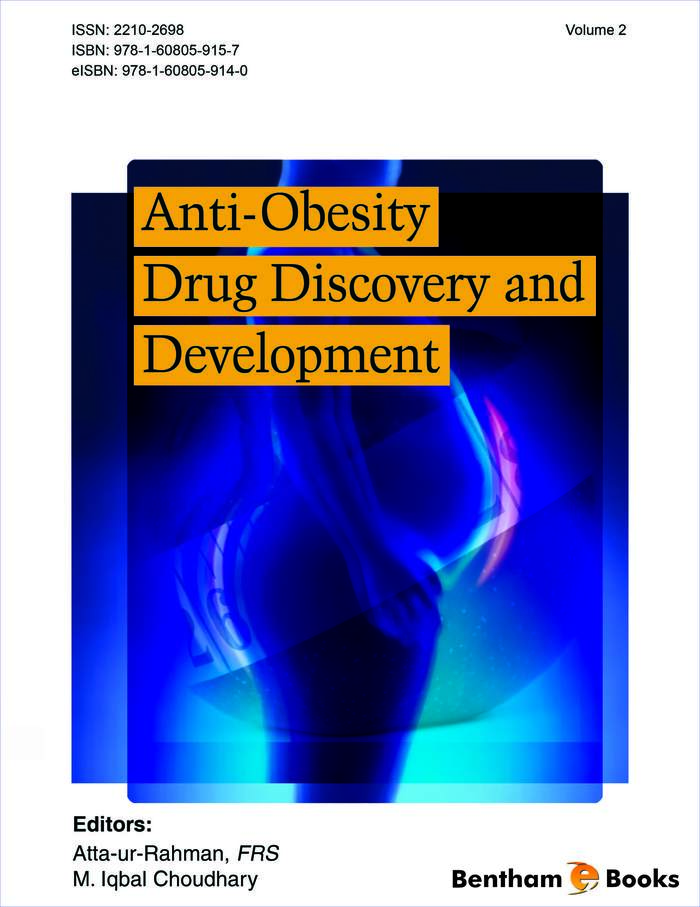Obesity is a disease which leads to several chronic illnesses and reduces the life
expectancy. It is a complex health problem, caused by a number of factors, such
as excessive food intake, lack of physical activity, genetic predisposition,
endocrine disorders, use of certain medications, and psychiatric illnesses. More
recently a linkage between infection with Adenovirus 36 and obesity has also
been investigated. Obesity has been identified as the leading preventable cause of
mortality and morbidity, and substantial research has been conducted to identify
the molecular targets for pharmacological interventions. Extensive studies on
nutritional aspects and life style changes have also been carried out to prevent the
on-set of obesity. Prevalence of obesity in both developing and developed world
has reached to an epidemic proportion. In response to this, efforts to control and
treat obesity have also been vigorously pursued, ranging from raising awareness
about lifestyle modifications to the discovery and development of safe and
effective anti-obesity drugs.
“Anti-obesity Drug Discovery and Development”
focuses on this important area of healthcare research. The second volume of this eBook series is a compilation of
five well written reviews on the state-of-the-art developments in obesity research. This volume begins with a review of Sabán-Ruíz et al. explaining the relationship
between obesity and cardiometabolic syndrome. This comprehensive review covers basic research and epidemiology about obesity, metabolic syndrome and
cardiac diseases, as well as old and new drugs used to treat obesity and
hypertension. The problem with such drugs that were approved for prescription,
was they are effective in the short-term but that they often exhibit several adverse
side effects. These include newer drugs, such as sibutramine, rimonabant and
orlistart. This has been an ongoing concern in anti-obesity drug development. The
researchers have also mentioned progress in the new drug development and
combined therapies in clinical trials. The chapter concludes with a discussion of
anti-obesity therapy using Topiramate, a drug used to treat psychological
disorders and the implications of such drugs for the treatment of cardiovascular
disorders.
Obesity is also be regarded as a consequence of homeostatic imbalance within the
body. Homeostatic balance is influenced by hormone levels, food intake,
epigenetics, immunological factors, and others. Suba, in chapter 2, explores the
hypothesis of estrogen as an anti-obesity agent. The author suggests that estrogen
has positive regulatory effects on the lipid distribution in the body as well as
resistance to insulin. Research also suggests that insulin helps to promote
pancreatic insulin secretion and controls the inflammatory response of adipocytes.
Hormonal therapy, such as estrogen administration to patients – postmenopausal
women in particular – has shown positive outcomes with respect to curbing fat
deposition in the body.
In chapter 3, Essam Abdel-Sattar and colleagues have reviewed the scientific
works on herbal and microbial remedies of obesity. This review presents the
mechanisms of action of active ingredients and contains a comprehensive list of
herbs that can be used to treat obesity and associated disorders. The authors have
also included illustrations of some of these herbs, many of which could be used to
develop effective nutritional supplements.
Reyna and Banu have reviewed the work conducted on the capacity of natural
extracts which can be used to interface with lipid metabolism. Natural products
can provide a safe and cost effective OTC solution for the treatment of obesity.
This review focuses on several types of plant extracts and also discusses some
benefits of common dietary herbs, such as tea, lotus and certain oriental and
eastern spices. The review also provides information about the anti-obesity
mechanism of action of selected natural products.
Babenko has contributed a lucidly written review on the possibility of targeting
sphingolipids metabolism in the quest for controlling obesity. Specifically, this
can be achieved by targeting sphingomyelin hydrolysis and nucleotide synthesis
pathways to limit the ceramide production in cells. Since an increased ceramide
levels in obesity patients has been observed, it is believed that reducing the
concentration of ceramides, by inhibiting the enzymes involve in its biosynthesis,
can help in tackling the disease. The author discusses the results of inhibition of
sphingolipids in mice as a first step towards drug development.
At the end we would like to express our deep gratitude to all the contributors for
making this volume an excellent compilation of state-of-the-art knowledge on the
molecular basis of obesity and its effective treatment. We also wish to express our
thanks to Ms. Maria Baig (Manager Publications) and other members of the
Bentham Science Publishers for their efforts in the timely completion of this
volume. We are also most grateful to Mr. Mahmood Alam (Managing Director)
for efficiently leading the Bentham team in this project.
Atta-ur-Rahman, FRS
Kings College
University of Cambridge
Cambridge
UK
&
M. Iqbal Choudhary
H.E.J. Research Institute of Chemistry
International Center for Chemical and Biological Sciences
University of Karachi
Karachi
Pakistan





